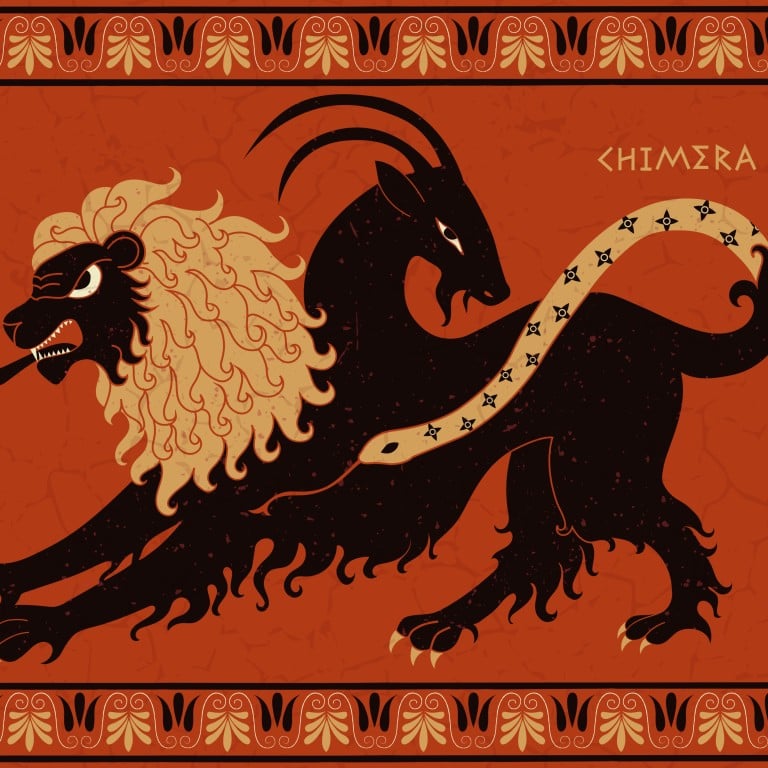
Can China’s Chimera crack invisibility with its hybrid approach to camouflage?
- A combination of the unique traits of chameleons, glass frogs and bearded dragons could form the material for an invisible cloak
- Chinese scientists said their multi-terrain design would be undetectable across microwave, visible light and infrared spectra
The scientists, from Jilin and Tsinghua Universities, say they have designed an experimental version – based on each animal’s distinct natural survival strategy – that could be undetectable across microwave, visible light and infrared spectra.
In a study published on Tuesday by the peer-reviewed journal Proceedings of the National Academy of Sciences, the researchers said they took a bionics-based approach to the problem of existing camouflages – their lack of versatility across different terrains.
“Our work transitions camouflage technologies from the constrained scenario to ever-changing terrains and constitutes a big advance towards new-generation reconfigurable electromagnetics [that can] change circuit topologies,” they said.
The study builds on rapid recent advancements in metamaterials – synthetics with the unique ability to manipulate electromagnetic waves – that have been increasingly applied to stealth technologies.

Through precise control of their surface structures, metamaterials can reflect electromagnetic waves in specific ways, effectively rendering objects invisible to radar. But their predefined functions can provide camouflage only in certain environments.
The Chinese scientists envisaged a metamaterial that could adapt to various spectral conditions and terrains while maintaining its resistance to visible and infrared light detection, the paper said.
They called the proposed metamaterial Chimera – the mythical creature made up of three different animals – because it incorporates the chameleon’s colour changes, the glass frog’s transparency, and the bearded dragon’s ability to regulate its temperature.
Lead author Xu Zhaohua, from Jilin University, said it was “intriguing that suitable working states of the Chimera metasurface can be found to match all the five terrains over the whole frequency range of interest”.
The scientists’ first inspiration was the chameleon, the Old World lizard best known for its ability to change its skin colour and tone.
The Chimera metamaterial mimics the chameleon by adjusting its microwave reflection properties to blend with different landscapes, from water surfaces to grasslands.
How Chinese students made an ‘invisibility cloak’ that evades security cameras
The Chimera’s design was also influenced by the glass frog, found in rainforests throughout Central and South America, which hides most of its blood in the liver during sleep, making the rest of its body transparent.
The researchers embedded the Chimera’s circuitry between layers of PET plastic and quartz glass to achieve a level of optical transparency reminiscent of the glass frog’s natural invisibility.
There was still the challenge of how to hide the heat generated by the electricity driving the metamaterial’s surface circuits, which could be exposed to infrared detectors. To address this issue, the scientists turned to Australia’s bearded dragon.
These reptiles regulate their body temperature by changing the colour of their backs, from a light yellow when they need to cool down to a dark brown which can keep them warm.

Using a mechanically driven design, the researchers said they have minimised the Chimera’s thermal differences to a mere 3.1 degrees Celsius (5.6 Fahrenheit), rendering it virtually undetectable to thermal imaging in various terrains.
By mimicking the way bearded dragons respond to their natural environments, the metasurface of the Chimera can reduce to some extent the possibility of its discovery by far-field thermal/temperature detection.
According to the paper, an experimental version of the Chimera metasurface was developed in a five-step process, starting with a pattern on plastic, followed by a metal mesh formation, and concluding with manual assembly to achieve the multi-spectrum stealth capabilities.
Radar ‘closer to spotting stealth jets’ with Chinese quantum project
The researchers said the technology’s potential applications are vast, from military uses to wildlife conservation work.
In military contexts, Chimera could provide significant strategic advantages by allowing objects or personnel to blend seamlessly into diverse environments and evade detection by radars, infrared detectors, and optical devices, they said.
The technology could also help with the non-invasive observation of animals in their natural habitats. By minimising human impacts on wildlife behaviour and the environment, Chimera could contribute to conservation efforts, the researchers said.

